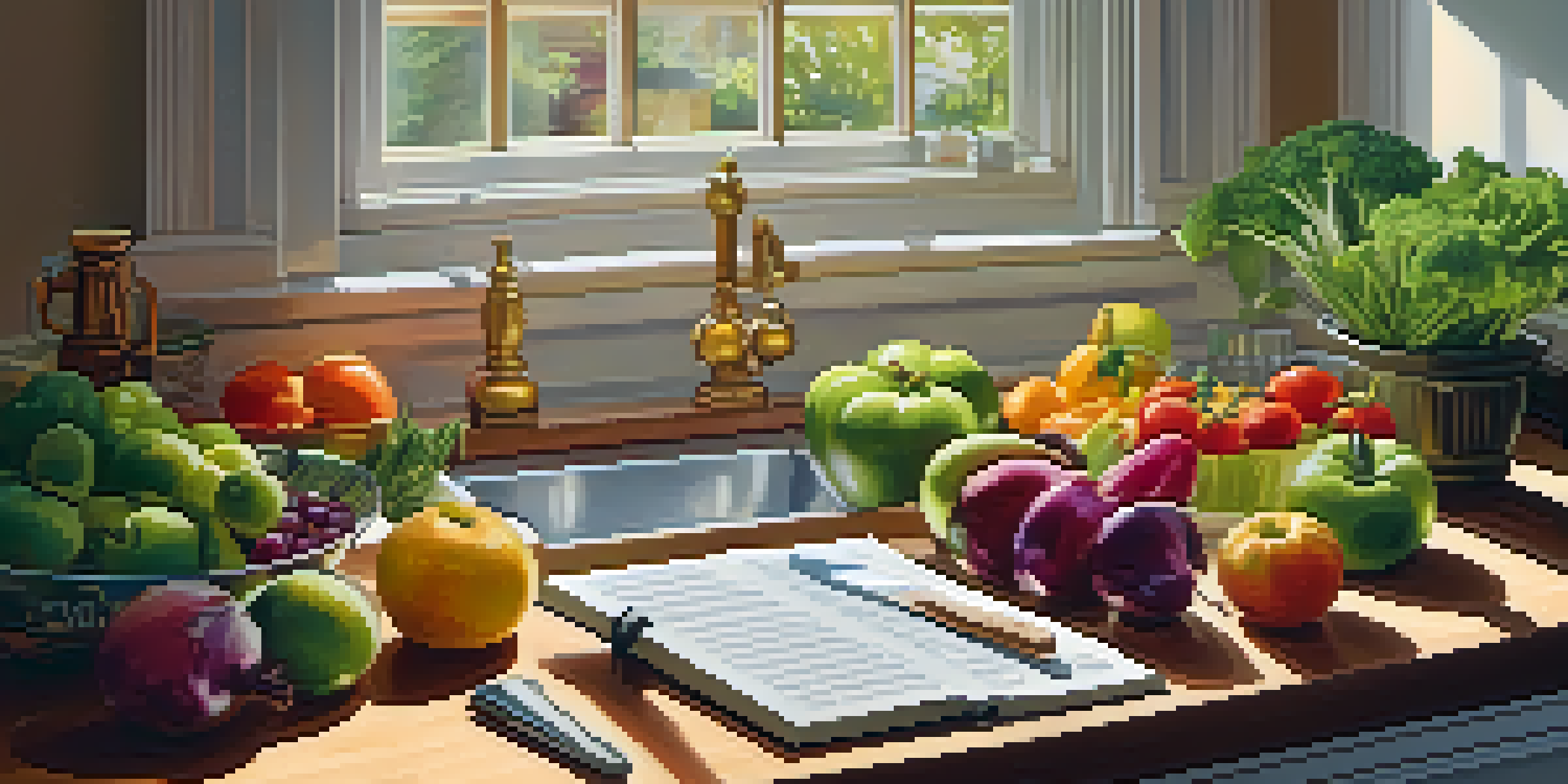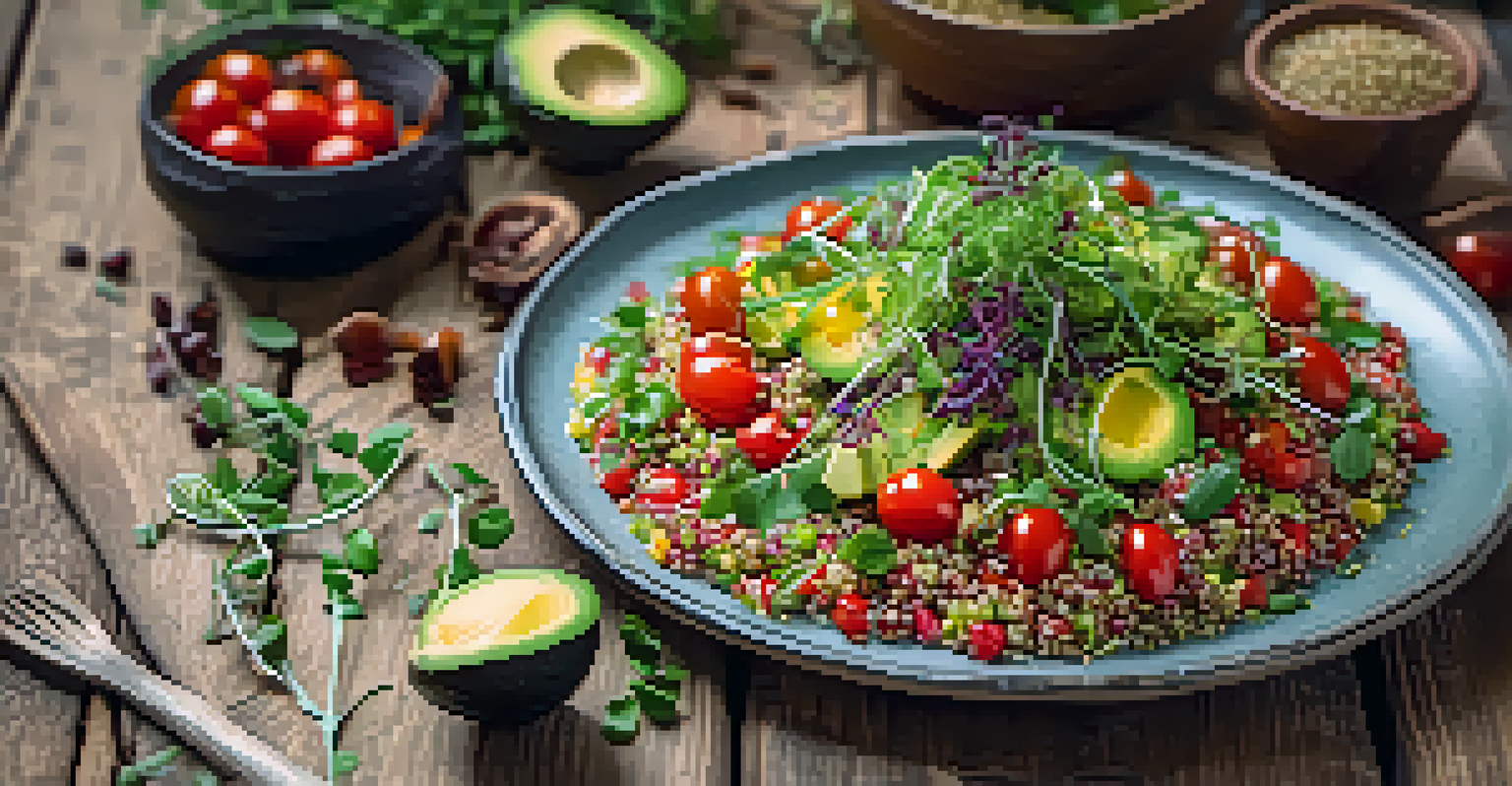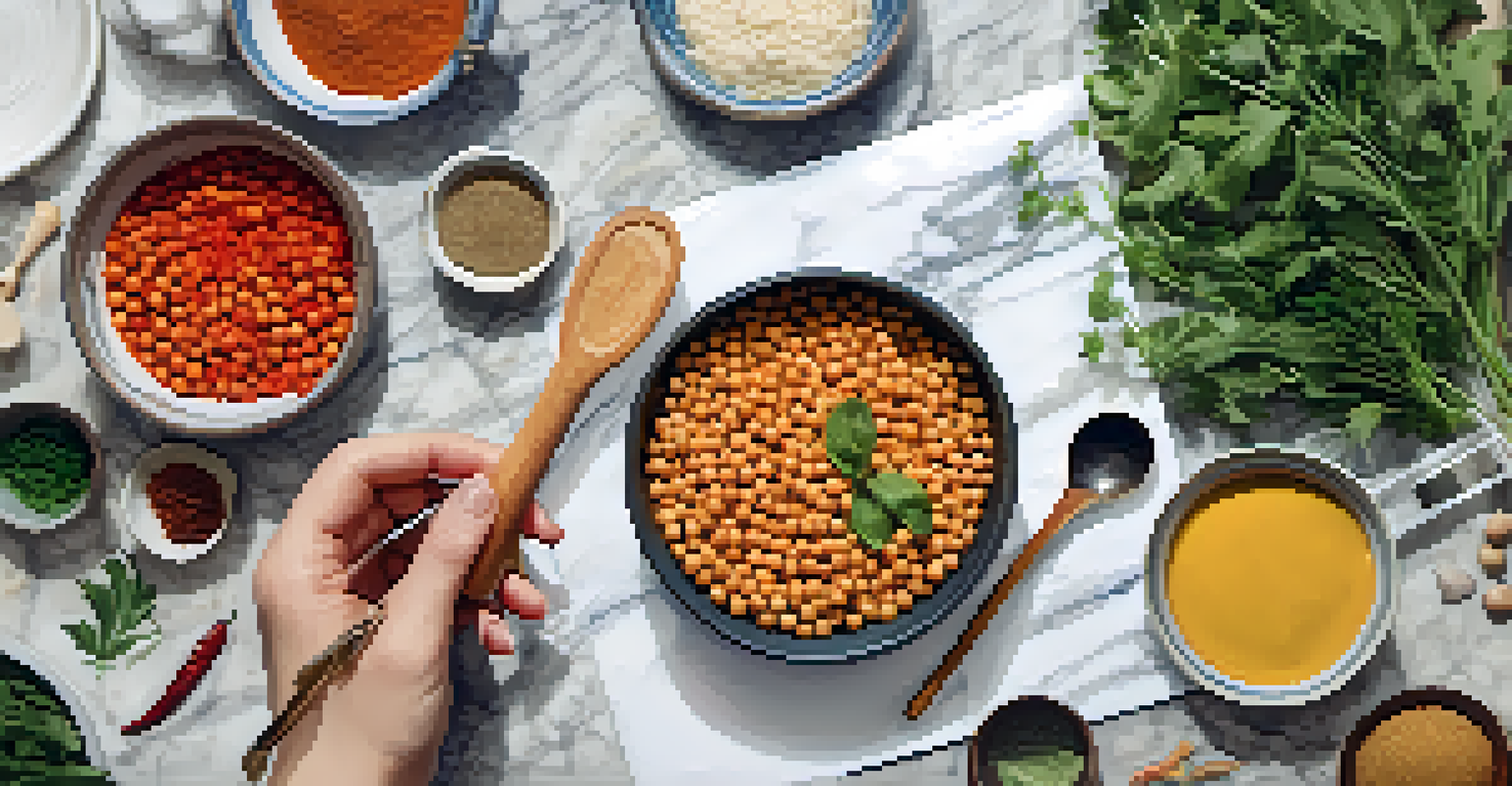A Beginner’s Guide to Vegan and Vegetarian Food Blogs

Understanding Vegan and Vegetarian Diets
Before diving into food blogs, it's essential to grasp the basics of vegan and vegetarian diets. Vegans abstain from all animal products, while vegetarians might include eggs and dairy. This distinction shapes the types of recipes and content you'll find on these blogs.
The food you eat can be either the safest and most powerful form of medicine or the slowest form of poison.
Both diets emphasize plant-based foods, which can be rich in nutrients and flavors. This focus not only promotes health but also supports sustainable eating practices. Understanding these foundations will help you appreciate the recipes you encounter.
By knowing the differences between these diets, you can better navigate the blogs that resonate with your dietary preferences. This awareness sets the stage for discovering delicious meals that align with your lifestyle.
Why Follow Vegan and Vegetarian Food Blogs?
Following vegan and vegetarian food blogs can greatly expand your culinary repertoire. These blogs often introduce unique ingredients and cooking methods you may not have encountered before. Imagine discovering a new favorite dish that’s both healthy and satisfying!

Additionally, these blogs foster a sense of community among like-minded individuals. You’ll find shared experiences, tips, and encouragement that can enhance your culinary journey. It’s like having a supportive friend in the kitchen, guiding you along the way.
Basics of Vegan vs. Vegetarian
Understanding the key differences between vegan and vegetarian diets helps you navigate food blogs more effectively.
Moreover, many bloggers share personal stories about their food journeys, which can be inspiring. Their passion for plant-based living often shines through, making the cooking process feel more relatable and enjoyable.
Key Features of Great Food Blogs
A great vegan or vegetarian food blog typically boasts user-friendly navigation. Clear categories for recipes, meal plans, and cooking tips can make your browsing experience seamless. The easier it is to find what you need, the more likely you are to experiment with new dishes.
Let food be thy medicine and medicine be thy food.
Engaging visuals also play a crucial role in food blogs. High-quality images can ignite your appetite and inspire you to recreate the dishes. It’s like having a tantalizing menu right at your fingertips!
Finally, a strong narrative voice makes a blog memorable. Whether it's a humorous anecdote or a heartfelt story, this connection can turn a simple recipe into a meaningful experience. It’s these elements that can transform a blog from just another website into a favorite go-to resource.
Popular Vegan and Vegetarian Blogs to Explore
There are numerous fantastic vegan and vegetarian blogs out there. For instance, 'Minimalist Baker' is renowned for its simple, delicious recipes that require ten ingredients or less. It's a perfect starting point for beginners looking for straightforward meals.
Another popular option is 'Oh She Glows,' which features wholesome recipes inspired by real-life experiences. The blog emphasizes healthy eating without sacrificing flavor, making it appealing to a wide audience.
Benefits of Following Food Blogs
Vegan and vegetarian food blogs expand your culinary skills while fostering a supportive community.
Lastly, 'The Full Helping' offers a blend of nutrition advice and comforting recipes. It's a great resource for those wanting to deepen their understanding of plant-based living while enjoying delightful meals.
How to Choose the Right Blog for You
When selecting a vegan or vegetarian blog, consider your personal tastes and dietary needs. Are you looking for quick meals, or do you want to delve into gourmet cooking? Tailoring your choices to your preferences can enhance your cooking adventures.
Another factor to consider is the blog’s recipe style. Some blogs focus on gluten-free options, while others may highlight raw food or meal prep. Finding a blog that aligns with your dietary restrictions or interests can make your journey more enjoyable.
Lastly, explore the blog's community engagement. A blog with active comments or social media interaction often means a supportive network of fellow food lovers. This interaction can provide motivation and tips, enriching your cooking experience.
Tips for Navigating Food Blogs Effectively
Navigating food blogs can be overwhelming at first, but a few tips can make it easier. Start by using the search function to find specific recipes or ingredients. This feature can save you time and lead you directly to what you’re craving.
Don’t hesitate to explore the blog’s archives. Many blogs categorize recipes by season or occasion, which can spark ideas based on what’s currently fresh and available. Seasonal cooking not only enhances flavor but also supports local farmers.
Choosing the Right Food Blog
Selecting a blog that aligns with your tastes and dietary needs enhances your cooking experience.
Lastly, bookmark or save your favorite recipes. Creating a collection of go-to meals can simplify meal planning and inspire you to cook more often. It’s a fantastic way to build confidence in your cooking skills!
Getting Involved in the Food Blogging Community
Engaging with the food blogging community can enhance your experience significantly. Many bloggers encourage readers to share their own creations based on their recipes. This interaction not only builds relationships but can also provide valuable feedback.
Social media platforms are great for connecting with bloggers and other food enthusiasts. Consider following your favorite blogs on Instagram or Facebook for daily inspiration and updates. It’s a fun way to keep your culinary creativity flowing!

Finally, don't shy away from leaving comments or questions on blogs. Bloggers often appreciate reader engagement and may provide additional tips or insights. Your participation can foster a sense of belonging within this vibrant community of plant-based food lovers.